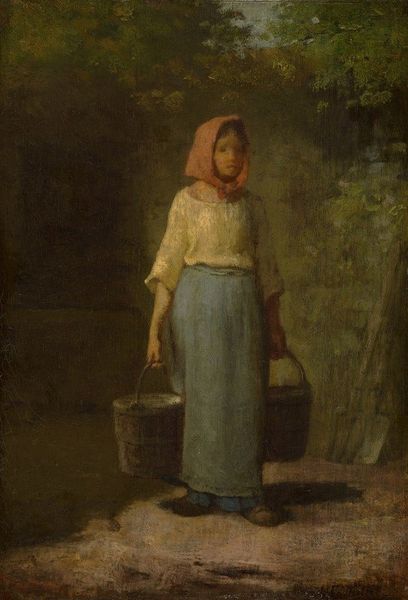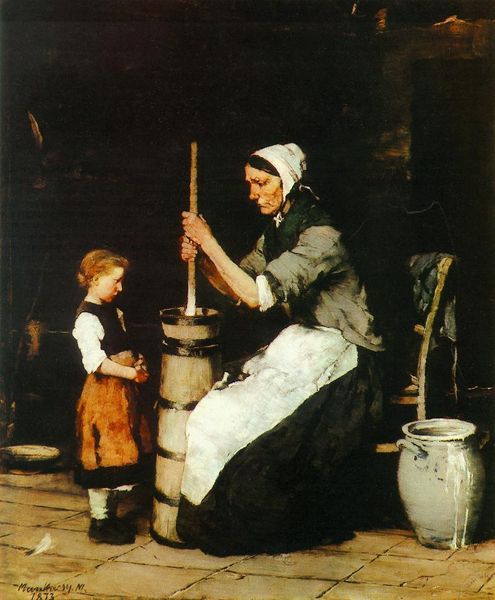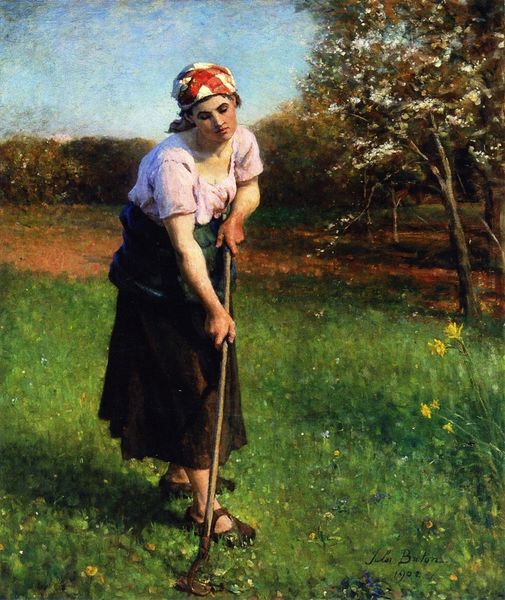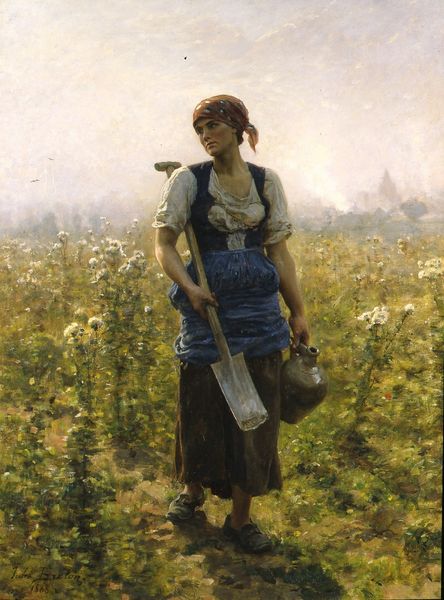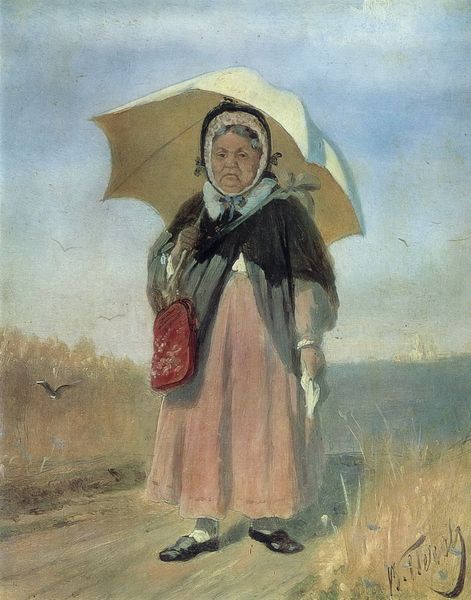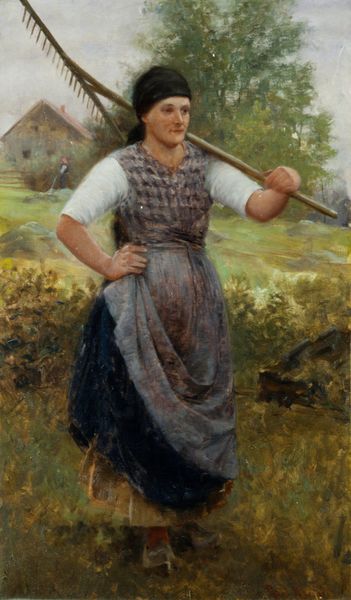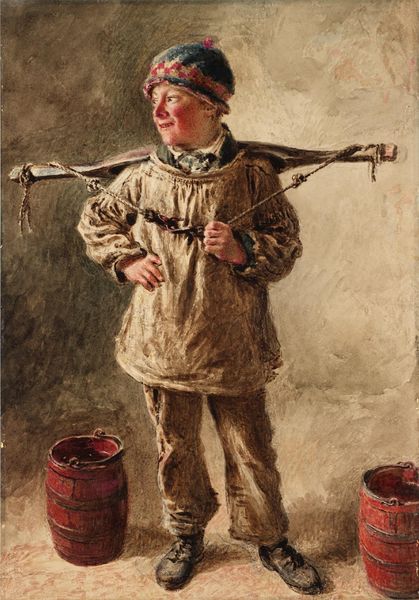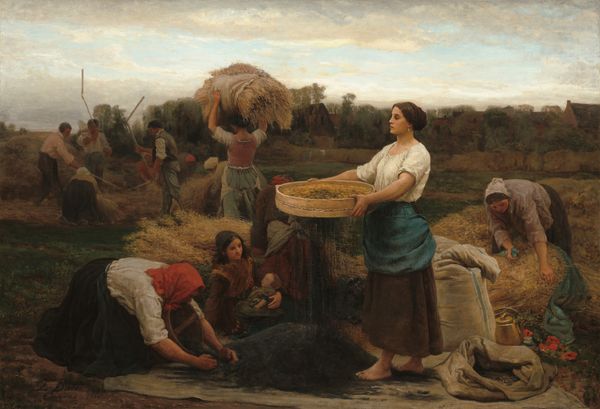
Dimensions: 39.5 x 30 cm
Copyright: Public domain
Curator: Welcome. Today, we're looking at Jean-François Millet's "Woman Carrying Firewood and a Pail," painted around 1860. It's an oil painting currently held in a private collection. Editor: The immediate impression is one of resilience. The earth tones—the browns and muted greens—create a very grounded feeling, don't they? It's a study in labor. Curator: Exactly. Millet was really making a statement. He saw the dignity in rural labor at a time when urban industrialization was being highly celebrated, and there's this Romantic idealization we see filtering through too. He elevated genre-painting in France. Editor: And consider the materiality. The oil paint itself. The artist has loaded paint on his brush in certain areas, the weight and feel of that roughspun fabric or that heavy wooden pail she carries feel palpable. You can almost feel the weight and the texture of the world this woman inhabits, right? This really speaks to how manual work creates value, both for subsistence and broader society. Curator: The Salon system in France promoted academic painting above all else, but Millet and others insisted on depicting modern life, just outside of the art establishment's focus in Paris. The artist really understood this changing landscape, making artwork for bourgeois urban collectors that depicts the laborers excluded from these new capitalist models. Editor: Yes! Millet's application of paint underscores the physicality and demands that are required to sustain the emerging capitalist markets. There is something unsettling in seeing the laboring body brought into painting for a public to passively appreciate and gaze on. The work highlights those paradoxes. Curator: Right. It highlights both the romanticism and realism in his depictions. "Realism" might be his legacy in art history. We tend to interpret it literally and sociologically in terms of art history now, but back then, that term also referenced philosophies, the art market, even political associations. Editor: Thinking about the materials, both the subject and artistic matter here are in perfect unity to comment on those shifts and inequalities, I'd say. It’s been great considering all this. Curator: I agree. The intersection of artistic choices, social context, and enduring human stories is always worth revisiting.
Comments
No comments
Be the first to comment and join the conversation on the ultimate creative platform.

